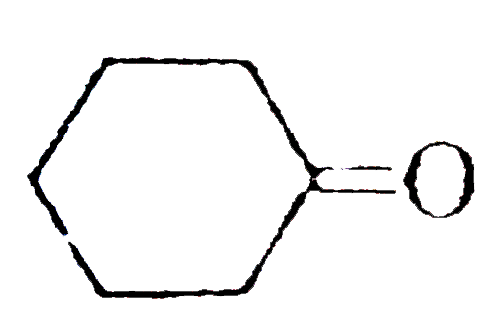Assertion :- Oxidation number of carbon in CH2O is zero.
Reason :- CH2O (formaldehyde) is a covalent compound.
If both Assertion & Reason are True & the Reason is a correct explanation of the Assertion.
If both Assertion & Reason are True but Reason is not a correct explanation of the Assertion.
If Assertion is True but the Reason is False.
If both Assertion & Reason are False.
The correct Answer is:B
To solve the question, we need to analyze the assertion and the reason provided.
Step 1: Understanding the Assertion
The assertion states that the oxidation number of carbon in formaldehyde (CH₂O) is zero.
Step 2: Determining the Oxidation State of Carbon
To find the oxidation state of carbon in CH₂O, we can use the following method:
1. Assign the oxidation state of carbon as X.
2. The oxidation state of hydrogen (H) is +1. Since there are two hydrogen atoms, their total contribution is 2×(+1)=+2.
3. The oxidation state of oxygen (O) is -2 (as it typically is in compounds).
4. The overall charge of the molecule is neutral (0).
Using the formula for the sum of oxidation states:
X+2(+1)+(−2)=0
This simplifies to:
X+2−2=0
X=0
Thus, the oxidation number of carbon in formaldehyde (CH₂O) is indeed 0.
Step 3: Understanding the Reason
The reason states that formaldehyde (CH₂O) is a covalent compound.
Step 4: Analyzing the Reason
While it is true that formaldehyde is a covalent compound, this fact does not inherently explain why the oxidation state of carbon is zero. Oxidation states are determined based on the bonding and electronegativity of the atoms involved, not solely on whether the compound is covalent or ionic.
Conclusion
- The assertion is correct: the oxidation number of carbon in CH₂O is 0.
- The reason is also correct: CH₂O is a covalent compound.
- However, the reason does not correctly explain the assertion because being a covalent compound does not imply that the oxidation state of carbon must be zero.
Thus, the correct answer is that both statements are true, but the reason is not the correct explanation for the assertion.
Final Answer:
Both the assertion and reason are correct, but the reason is not the correct explanation for the assertion.
The assertion states that the oxidation number of carbon in formaldehyde (CH₂O) is zero.
To find the oxidation state of carbon in CH₂O, we can use the following method:
2. The oxidation state of hydrogen (H) is +1. Since there are two hydrogen atoms, their total contribution is 2×(+1)=+2.
3. The oxidation state of oxygen (O) is -2 (as it typically is in compounds).
4. The overall charge of the molecule is neutral (0).
X+2(+1)+(−2)=0
This simplifies to:
X+2−2=0
X=0
The reason states that formaldehyde (CH₂O) is a covalent compound.
While it is true that formaldehyde is a covalent compound, this fact does not inherently explain why the oxidation state of carbon is zero. Oxidation states are determined based on the bonding and electronegativity of the atoms involved, not solely on whether the compound is covalent or ionic.
- The assertion is correct: the oxidation number of carbon in CH₂O is 0.
- The reason is also correct: CH₂O is a covalent compound.
- However, the reason does not correctly explain the assertion because being a covalent compound does not imply that the oxidation state of carbon must be zero.
Both the assertion and reason are correct, but the reason is not the correct explanation for the assertion.
Topper's Solved these Questions
Similar Questions
Knowledge Check
The oxidation number of carbon in CH2Cl2 is
A0B+1C+2D+4The oxidation number of C in CH2O is
A−2B+2C0D+4Assertion: Oxygen atom in both O2 and O3 has oxidation number zero.
Reason: In F2O, oxidation number of O is +2.AIf both assertion and reason are true and reason is the correct explanation of assertion.BIf both assertion and reason are true but reason is not the correct explanation of assertion.CIf assertion is true but reason is false.DIf both assertion and reason are false.
Hybridisation of carbon in CH2=CH−⊕CH2
View SolutionAssertion :− The IUPAC name of the compound
 is cyclohexylidene methanone.
is cyclohexylidene methanone.
Reason :− CH2=C=O is called ketone.
View SolutionFind the oxidation number of carbon in the following compounds: CH3OH,CH2O,HCOOH,C2H2.
View SolutionDetermine the oxidation number of O in the following:
OF2,Na2O2andCH3COOH.
View SolutionAssertion : In CH2=C=CH2, all the carbon atoms are sp2-hybridized.
Reason : All the hydrogen atoms lie in one plane.
View Solution
